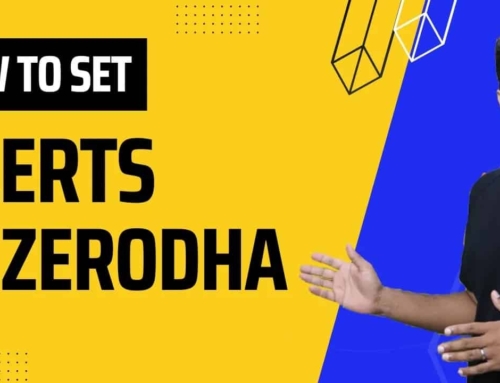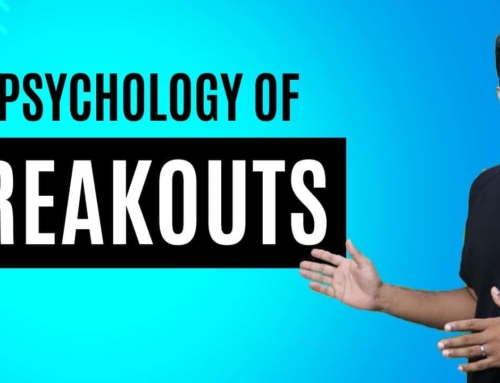What is the Best Time Slot for Intra-day Trading?
So, what is the best time slot for doing Intra-day Trading? This is one question which is asked by almost every beginner and I, myself have experimented with different time slots and different strategies. So, I thought, why not make a video about this topic so that I can share my experience and knowledge so that all of you can benefit from that.
That is exactly what we will do in this particular video. Before we talk about the best time slots for Intra-day Trading, we have to break down the market hours into some logical parts. As you guys know that the equity markets are open from 9 o’clock in the morning, till 4 o’clock in the evening and the time from 9:15 AM to 3:30 PM are called regular trading hours.
The time slot from 3:40 till 4 o’clock is called post-market hours. Now, if you don’t know what is pre-market or post-market don’t worry as we have made dedicated videos for each of these topics. Hence watch them, and I’m sure you will figure out what they are.
Now coming to the regular trading hours. We can also break them down into some logical groups so that it will make a little bit more sense and I will explain them later as we go along. In trading lingo, this time slot is called the first-half and this time is called the second half.
Now that we have broken down the market to this logical time-frame, it’s time for us to talk about which time-frames are not good for doing intraday trading. The first thing that you guys need to remember is that both pre-market and post-market are absolutely not recommended for doing intraday trading. The exact reason for that has already been explained in the videos that I talked about. In short point number one is lack of liquidity as there is not enough trading volume.
Number two is in both the circumstances; you can only enter it to the trade and you cannot exit the trade. For intra-day trading, you have to enter and exit in that same reading session. Hence, that’s the reason why I will not recommend you to do intra-day trading in pre-market and post-market hours.
Now the next time slot, which is, I think is the most dangerous for intraday traders is 9:15 till 9:30.
The first 15 minutes are very dangerous because this is the time when volatility can be very, very high because the price discovery is going on. All the market participants are placing their orders and there is a lot of buying and selling. The prices can easily go up or down by 1 or 2%.
Hence, the probability of your stop-loss hitting during this time is very, very high and this is most dangerous for option traders. The second thing that I have observed when it comes to this timeframe is a lot of retail traders get very excited and they think what kind of trades we will take.
As soon as the market opens, we have a tendency to just go and buy or sell something. What happens is that more often than not, we take a trade and mostly those trades do not work out because of the volatility and the other factors.
Once you incur a loss here, what do you think that reading psychology will be for the rest of the day? Well, you will keep trying to recover from those losses and in the attempt of recovering from those losses, we tend to make even bigger mistakes. So, it is not a very good idea for jumping right in the beginning and taking a big loss and then for the rest of the day, we are trying to dig deeper and deeper to come out of this. That is the reason of why I will strongly recommend you to avoid trading in the first 15 minutes.
The next very important time slot which I recommend you not to trade is from 3 o’clock till 3:30 and there is a very good technical reason for that. What happens is that with most of the brokers, they will not allow you to carry your intra-day orders beyond 3:10 or 3:15. If you take a trade at, let’s say 3 o’clock, you barely have 10 or 15 minutes for your trade to work out and if it doesn’t, then you will be forced to cut that position and will be forced to come out of that.
Hence, due to the time limitation, I will recommend you not to take a trade in this last half an hour. The next time slot which I will not recommend you guys to trade is half an hour before the European markets open. The European markets usually open at either 12:30 or 1:30, depending on the daylight savings.
The reason why we should not be taking a trade just before the European markets open is assuming you have a long side bias that you want to buy something and anticipate that the market and a particular stock will go up. What can happen is that, if there is some negative sentiment across the globe and if the European markets open lower and they start falling as soon as they open, then your long position can get into trouble.
So only after you have seen how the European markets are doing is it a good idea for you to take a directional trade after that time. Now we have talked about a lot of time slots that we should be avoiding, but does it mean that the rest of the time slots that we did not talk about are ideal for trading?
That depends on the strategy that you want to use. So let me go one by one. If you are looking for trading momentum-based strategies, where you’re looking for breakout to happen or breakdown to happen, you are basically expecting a big movement in the stock or the index. Then the ideal time slot based on my experience are either 9:30 to 10:30, or from 1:30 to 3 o’clock because, the first morning hour is a time when a lot of retail traders are active and so there is a momentum because of them.
In the last hour, there is a lot of institutional activity because of which there can be some serious momentum. Hence, both of them are good time slots for momentum-based strategies.
The next kind of strategy is the mean reversion strategy right now. What exactly is Mean reversible? Reversion means that if something has gone up a lot, it is quite normal for it to come back to its mean. In a similar way, let’s say the market has fallen down in the first one or two hours. It’s very much possible for them to give you a pullback. Hence, if you want to deploy a mean reversion strategy, then in my experience, that time starts between 10:30 to 1:30. They work very well for mean reversion kind of strategies.
Now the third kind of strategy is our gap base strategies. Let’s say there is a big gap up or a big gap down and you want to either buy or you want to sell at that time. Now by the very nature of gaps, if you want to trade a gap, either go along with it or go against it. You basically have the first 15 minutes from 9:15 to 9:30. That is basically the time that you have to create a gap-based strategy, which as I have already discussed is not really a good time for us to trade given the enhanced volatility. However, there are traders out there who are experienced and who know how to handle.
Hence for you guys who know what you’re doing, you know that this time slot is fine. Just keep your position sizes small so that in case you are wrong, you are not going to incur a big loss.
The next kind of strategy, which is one of my favorite strategies is Expiry Day strategy. So, expiry day date strategy for those of you who don’t know is when options sellers sell options.We actually have made a several bunch of videos on this topic which you might want to check. Expiry day strategies normally work on Wednesdays and Thursdays for nifty and Bank nifty. For Fin nifty, it would work on Tuesdays, but as of now, there is not enough liquidity there. Hence for the expiry day strategies, the ideal time slot is pretty wide.
What I do normally is that when I’m trading on expiry days, I start selling all the options from 9:30 and I try to wrap up my trade by around 1 o clock. The worst-case scenario would be about 2:30 and beyond 2:30, I’m extremely careful because there can be some very high volatility and whatever profits that we have made in the past can easily vanish right in front of our eyes. That is something to keep in mind, if you want to do expiry day strategies.
The next kind of strategy, which is again, very common are the event-based strategies. So, whenever there is a big event such as a budget, RBI announcements or election or anything that we know which is coming and which can potentially move the market, if you have a strategy that you want to use on these kinds of days, then first of all, you need to know exactly when that event is happening. Other-wise it’s very hard for you to time it and then even for an event, you have to break down the day into two parts; pre-event and post event.
My strategy is that I do not rate before any event, because I know that before the event, there can be some speculation. Sometimes the market can make erratic moves and are not very reliable. What I like to do is that if I have an event-based strategy, which I do for taking advantage of volatility, I wait for the event to be out.
After the event is out, I give it another 10 or 15 minutes, and then I take a trade based on the situation at that point of time. If you want to do any event-based strategy, then you need to know the exact time and you need to have a clarity of exactly what we want to do before the event or after the event.
In any case you should never be taking a trade today means don’t carry a position when that event is actually happening and that is how you should plan for your event-based strategies.
There are a couple of other strategies that we really don’t have a lot of time to talk about and number one is scalping and the other is arbitrage strategies. Now, scalping is a very broad term and is not just one strategy. It can be several different strategies because depending on what exactly you’re trying to scalp. If you are say scalping momentum, then you have to go with the time slots that we talked about between 9:30 to 10:30 and then 1:30 to 3 o’clock when the momentum is the highest, or if you are trading based on some key levels, then scalping can work best if you’re doing mean reversion based trades
For that, 10:30 to 1:30 happens to be a good time slot and then there are other ways in which scalping can be done, which are not very much dependent on the timing because scalping is a very short duration and you don’t need to stay in the trade for a long time.
Hence, it doesn’t really get impacted a lot, but then again, you need to know what you’re doing. Otherwise, you can make some expensive mistakes. Arbitrage type of strategies are also independent of the market hours because when you are trading an arbitrage strategy, you have to take the trade when there is an arbitrage opportunity and you don’t know when it might appear. It might appear in the morning, midday, or it might appear in the second half. Whenever it happens, you need to be ready for taking advantage of that. From my experience, for arbitrage kind of a strategy, it’s becoming hard for retail traders to find those kinds of opportunities and given that there are so many algos that are in the play.
You have to carry the position for several days and that of course is not part of the intraday trading. Hence this is the reason why I will not encourage you to do a lot of arbitrage kind of intraday trading.
That is basically what I wanted to share in this video. I mean, there are so many other things to talk about in this topic. There are so many different strategies out there that I can talk about, but again, we had to limit the video to a certain time. I hope that this video would have given you a perspective of how we approach interpreting as far as them timing is concerned.
In today’s session, we will understand Max Pain theory.
Before we talk about the subject let us make a few things clear.
Number one, for you to understand this, you need to have some basic understanding of options and without that you will not be able to understand this video.
Number two, this theory only works for stocks and indices that are trading in the futures and options segment. We have about 200 stocks in the F&O segment and hence this theory can be applied there.
Finally, the most important thing is that for this theory to work, that stock or index has to be highly liquid which means that it has to have a lot of trading activity. With that said, let’s try to understand the gist of this theory.
The theory says that there are two types of traders, option buyers and option sellers. Now, option buyers are people like you and me who do not have a lot of money. I mean, we do have money, but not a lot and we also don’t also have any insider information in the market. For the lack of a better word, this theory assumes that option buyers are nothing but gamblers.
Now, on the other hand, we have option sellers who are usually the big institutions, people with a lot of money, a lot of inside information, world-class infrastructure, etc. The theory assumes that these are the guys that are the casinos in this equation. As per this theory, Option buyers are gamblers and option sellers are the casinos.
Basically, this is a zero-sum game which means one person’s gain is another person’s loss and the core philosophy of Max Pain theory is just like casinos, option sellers will always win in the long run. Based on this philosophy, the Max Pain theory says that any stock or index will gravitate towards the price where the losses with the option bias are maximum.
This is where the option buyers will experience maximum pain. This might sound a mean way of looking at the world to say that Option buyers are always losers and options sellers are the winners, but that is a simplistic assumption that this theory has made about the real world.
Let’s talk about where can we find max pain related information. There are many websites that show Max Pain and currently, I’m using niftytrader.in, but you can find this information on almost any website or app related to Options. Now when you go to these websites, this is how max pain is usually represented and the calculation behind this chart is done a little differently by each website, but that is not very important.
What is important is how do we interpret this chart? The first thing that you need to know is that when you see this chart, you have to see from an option seller’s perspective, not the option buyers. The x-axis here is very simple and it just shows the price of the stock of the index.
In this example, we are using NIFTY and so the x-axis shows the different price points of NIFTY. Now the Y axis shows the loss that the options sellers will incur. You will also notice that there are two colors that are used here, red and blue. Let’s start with red first and so the red bars right here, they show the loss to Put Option Sellers if NIFTY went down.
Currently, say, NIFTY is at 16,300 and so if NIFTY starts to fall, the market starts to fall and then you will see that the Put Option Sellers will incur more loss. In the same way, the blue bars represent a loss to the Call Option Sellers. If the market went up, say, to 17,000, 18,000 or 19,000, this is how much loss the Call Option Sellers will have to incur all. So based on this information, Max Pain theory says where is the price point, where the loss to the put option sellers and the call option sellers combined will be the least. The price at which the total maximum loss to option sellers is the least will be the price at which the option buyers will experience maximum loss or maximum pain.
Based on that, the theory predicts that the expiry will happen somewhere close to that price and that is the logic behind this Max Pain theory.
However, there are a few things which I want to confirm. Number one is Max Pain theory is not a magic formula and it doesn’t always work. The second thing is that it’s always backward looking and any big event at the market can substantially change the way the graph looks at any point of time and you should be aware of that.
Finally, just like any technical indicator, it should be paired with other factors to make your trading related decisions. Anyway, we will discuss many of these aspects in the future videos, but in this video, I hope that at least you understood the core concept of max pain.
If you want to test your understanding of max pain or test your understanding of options or stock market in general, we have created a bunch of quizzes that I will highly encourage you to take and test your knowledge.
The link for the same is https://www.vrdnation.com/stock-market-quizzes/



![What is Virtual Contract Note [Zerodha]](https://www.vrdnation.com/wp-content/uploads/2023/10/maxresdefault-virtual-note-500x383.jpg)



Leave A Comment